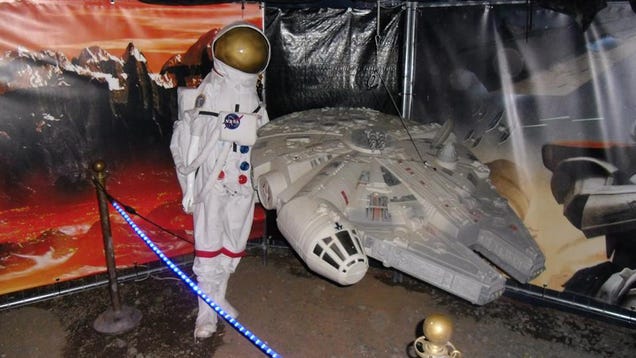5. Display of Challenges
Screenwriter Aaron Sorkin, creator of The West Wing, The Newsroom, and A Few Good Men, always discusses one aspect of his writing technique: "What are the characters trying to accomplish, and what is getting in their way?" A museum exhibit can do the same thing.
Sorkin's technique isn't that much different than most good writers - it's called "plot." It's the reason we watch movies and read books - we get emotionally involved with the goals of the main characters, and want to see how they resolve their challenges. Without challenges, there is no plot, there is no story, and we are not interested in the outcome.
Any sort of museum can display the challenges presented in their stories. Overcoming challenges is a vital part of history and science, the two most popular types of museums.
Bad museums tell you about stuff. Good museums tell stories, and overcoming challenges are a part of good stories.
I have seen great exhibits showing the challenges of early astronomers, trying to build bigger and better equipment to see more of the universe. I love the Wright Brother's exhibit at the Air and Space Museum, where the story centers on their gliders, which didn't generate the lift their calculations said they should.
I've seen great museum exhibits that address the challenges of communication, lack of cultural understanding, and unnecessary animosity. Challenges about a restricted press, challenges brought about by a lack of international trust.
Challenges make a great story. Stories make great exhibits.
 |
| This is a challenge... |
4. Authenticity
This is a no-brainer, and I haven't really seen any museums that don't strive for authenticity (except maybe for this Star Wars exhibition in Germany).
 |
| Not Authentic. |
There is an indescribable quality about having actual artifacts, not replicas, models, or illustrations. Every story has it's objects, devices essential to the outcome of the story. Seeing, and to a certain extent, interacting with these objects can be a visceral experience - once we're emotionally connected to the story and the outcome, objects give us the ability to become part of the story.
But, especially in a science museum, I don't just want to know what the objects are - I want to know how they work. Which brings me to...
3. Multiple Levels
Every object should have multiple levels of information. A quick survey should give the viewer an overview of what the story is about (like a newspaper headline), and some other experience (reading, watching, or experiencing) should give a deeper understanding of how the story unfolds. This is sufficient for most people. Some people, however, want a really deep understanding - not a deep understanding of everything, mind you, but an artifact or plot element might capture different people's attention. Those people want to really dive deep.
For example, at the Air and Space Museum, we have a control panel for both an Apollo Command Module and Lunar Module. I recognize the bigger parts (thruster controls, for example), but I want to know more about these.
I don't know what the switches do. I don't understand the acronyms on the panel. I don't understand the layout of the panel and why it was laid out that way... but I want to. Not everyone does, but the major storytelling elements and artifacts should have these multiple levels of detail.
2. Multiple pathways for enjoyment.
In education, we have what we call the Theory of Multiple Intelligences. They are:
- Visual-Spatial
- Bodily-Kinesthetic
- Musical
- Interpersonal
- Intrapersonal
- Linguistic
- Logical-Mathematical
1. Experiential
This is the biggest one for me. I have a pretty active imagination, and I want to gather as many experiences in life as I possibly can. I know there are many things in which I will never be able to participate, but museums can make it seem like more of a reality.
I don't just want to see a spacesuit - I want to know what suit pressurization feels like, even if it's just on my hand or arm. I want to sit in a Gemini capsule, and then be told how Jim Lovell and Frank Borman sat in one like that for 2 weeks straight. I want to feel how the Saturn V shook on liftoff. I want to fly a Wright Brothers' kite.
I don't just want to know about George Washington's or Ulysses S. Grant's battle strategy - I want to learn about all the variables they had to deal with, design a battle plan myself, and see how it works out.
I don't just want to see a diagram of how slaves were packed in a slave ship - I want to feel what it was like.
Experiences bring me closer to a true understanding of the story, which is the purpose of museums. Many museums advocate for something - advocate for protection of the environment, to not repeat the mistakes of our ancestors, to further advance the sciences. These experiences bring me closer to the reasons for which the museum is advocating those things.
_____
This week, I got to go behind the scenes at the Udvar-Hazy center and see the work some of my fellow interns are doing in conservation. I didn't get out and do a whole lot during the week, but I managed to get to Old Town Alexandria on Saturday. I toured the George Washington Masonic Memorial and spent the afternoon reading on the shore of the Potomac. Good times!
No comments:
Post a Comment